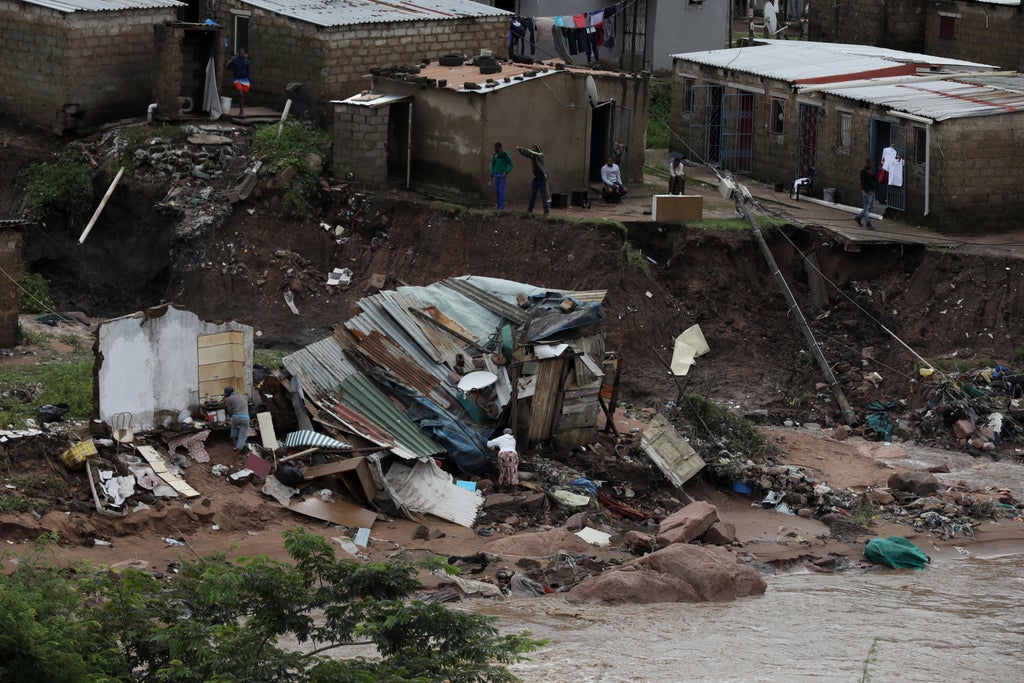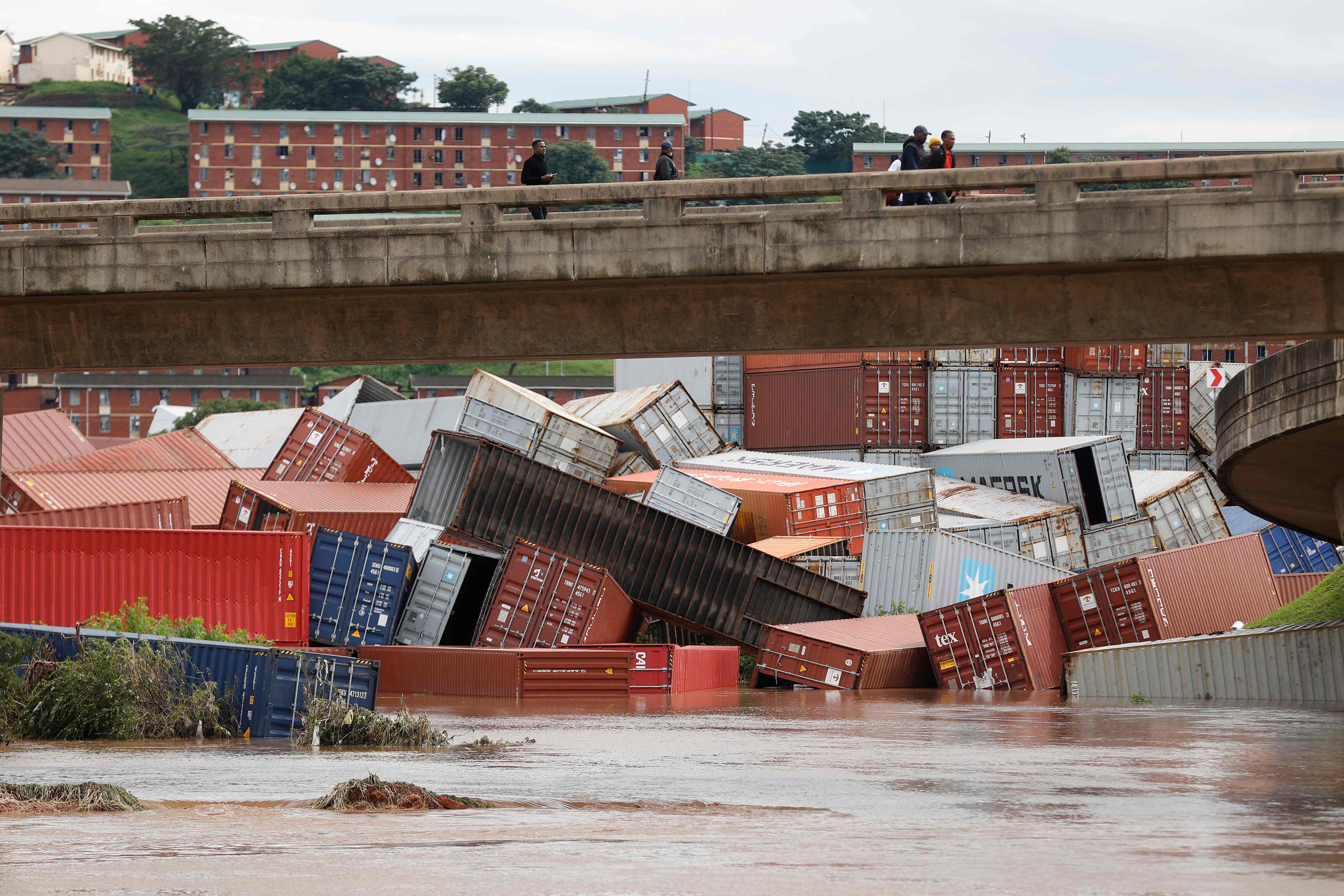
Torrential downpours and flooding have triggered mudslides, killing at least 45 people in South Africa.
Water poured through the city of Durban and surrounding areas in KwaZulu-Natal province on Tuesday. Local officials expect the death toll to rise after a number of people were swept away.
Several hundred people have lost their homes and belongings, and electricity has been cut off to a number of areas.
The city’s port, the largest and busiest in sub-Saharan Africa, and major highways suffered major damage due to sustained rainfall which burst banks of rivers and led to surging waters. Dozens of shipping containers were pictured in the floodwaters, buckled and cracked open.
Transnet, which runs the Durban port, said in a statement that operations had been suspended due to the extreme downpours and high winds.

South Africa’s military has been deployed to Durban and the surrounding eThekwini metropolitan area on Tuesday to help with rescue efforts locally.
More heavy rain was forecast in the coastal city through this evening.
Recent extreme rainfall in southeast Africa has become more intense and damaging due to the climate crisis, a team of international scientists reported earlier this week.
The World Weather Attribution (WWA) group said that climate change made destructive downpours more likely during back-to-back storms in Madagascar, Malawi and Mozambique in early 2022.
Between January and March, southeast Africa was hit by three tropical cyclones and two tropical storms in just six weeks – with more than a million people affected by extreme rainfall and severe flooding, and some 230 recorded deaths.
“Again we are seeing how the people with the least responsibility for climate change are bearing the brunt of the impacts,” said Dr Friederike Otto, who is part of the WWA which analyses the links beween climate change and extreme weather events.
“Rich countries should honour their commitments and increase much-needed funding for adaptation, and for compensating the victims of extreme events driven by climate change with loss and damage payments.”







